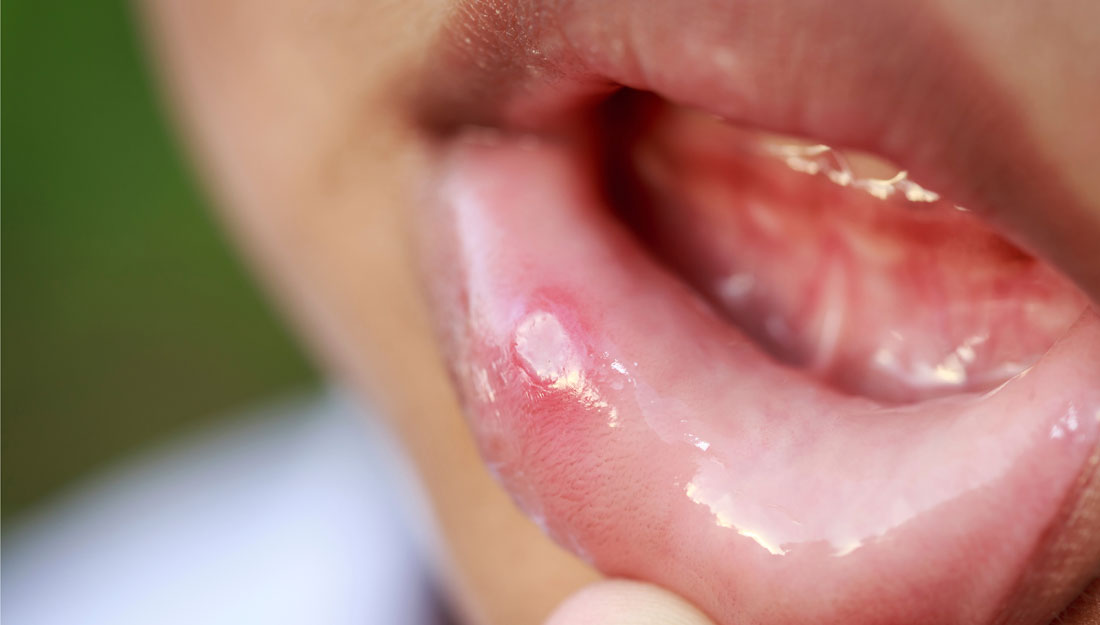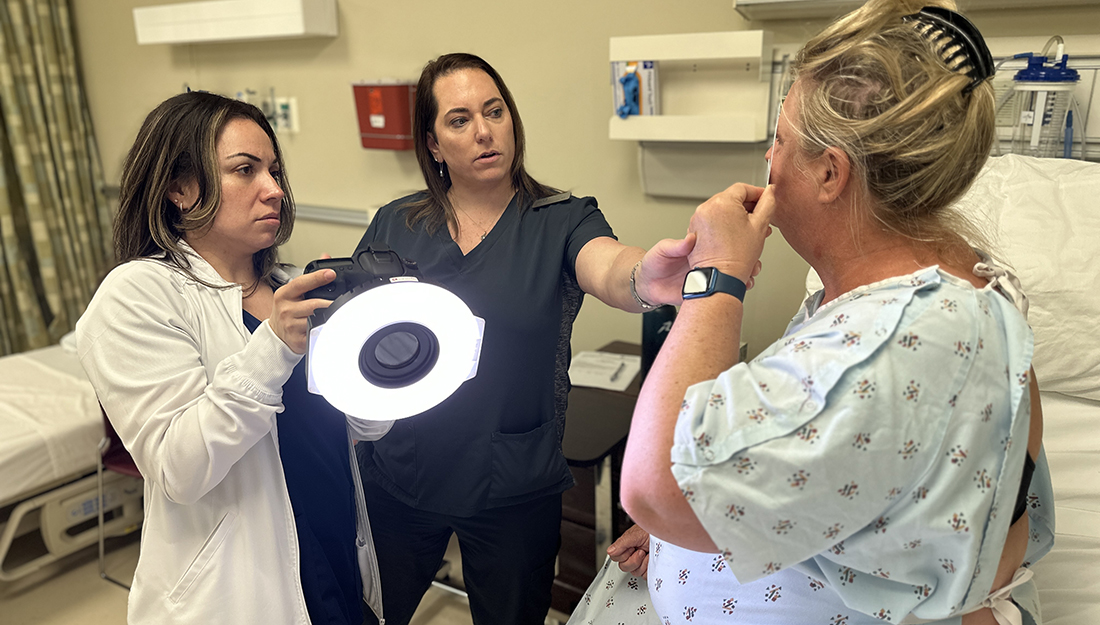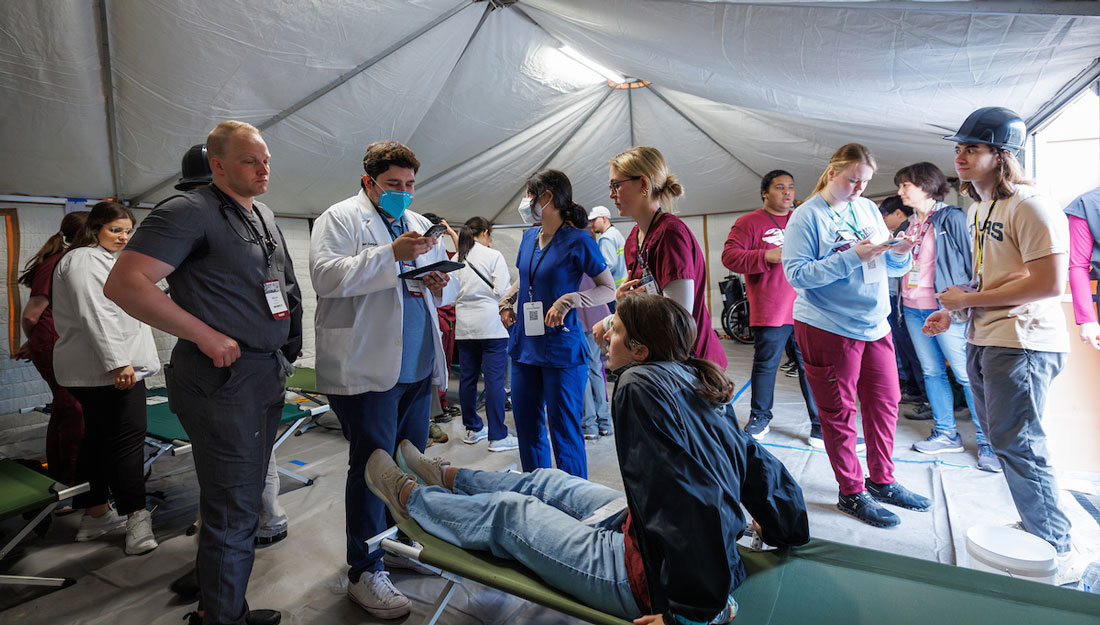- Christina Sumners
- Dentistry, Research, Show on VR homepage
Patching it up: Bandages for canker sores
Researchers are working on a novel treatment for canker sores, and it might be as easy to use as an adhesive bandage

Canker Sore on Lip
You can feel it coming—that slight burning sensation in your mouth that means a canker sore is on its way.
Canker sores, also called oral or mouth ulcers, are annoying and painful. There are few good treatments, so most people are left waiting them out. And as they occur three or four times per year, on average, and last up to a week, people can spend a month out of every year impacted.
Soon, a novel treatment may change all that. Xiaohua Liu, Ph.D., an assistant professor at the Texas A&M University Baylor College of Dentistry, is developing a bioadhesive patch to treat oral ulcers like canker sores (or to be technical, aphthous ulcers). A bioengineer by training, Liu hopes that he and his team can create a product to deliver medication more efficiently.
“What we’re trying to develop is a patch that has the drug pre-loaded into it, so that we can control how the medication is released and we can be very specific about where it goes,” Liu said. “We designed the patch with a multiple layer structure so that we can force the drug to be released onto the site of the oral ulcer.”
There are some gels and mouthwashes that exist now that can at least dull the pain, but they are easily washed away when people drink or eat, or simply by their own saliva.
Liu’s collaborator, Yi-Shing Lisa Cheng, DDS, M.S., Ph.D., an associate professor of diagnostic sciences at the Texas A&M University Baylor College of Dentistry, sees patients with multiple ulcers, including canker sores, and she brought the problem to Liu.
“Several immunological diseases, such as aphthous ulcers or oral lichen planus, can cause multiple ulcers, erosive lesions and sore mouth to patients for days or weeks,” Cheng said. “Because the causes for these diseases are still unclear, they are not curable and the patients have to live with these diseases for life. The goal of our management is for relieving pain when the disease is active.”
Although the terms are often used interchangeably, canker sores are not the same as cold sores. Cold sores, also called fever blisters, are caused by the herpes simplex virus type 1. Cold sores often occur on the lips and the outside of the mouth, and they can be treated with antiviral drugs. They’re also very contagious.
Canker sores, on the other hand, don’t have a single known cause. They might be brought on by injury to the mouth such as biting one’s tongue or repeated rubbing by braces or other oral devices, but they seem to also be triggered by diet, hormones or emotional stress.
Because they’re so difficult to prevent, a good treatment would be very beneficial to millions of patients.
“The bioadhesive patch that Dr. Liu is developing will help us not only to protect the ulcers from physical irritation by food or oral structures, but also to deliver the drug to the place it needs to be, which will prevent overdose and possible local side effects,” Cheng said.
The next step for Liu and Cheng will be testing the patch for safety and effectiveness in animal models, and eventually clinical trials in people.
“We hope these kinds of patches can ultimately help improve the quality of life for patients,” Liu added. “That’s why we’re so excited about this work.”
Media contact: media@tamu.edu


